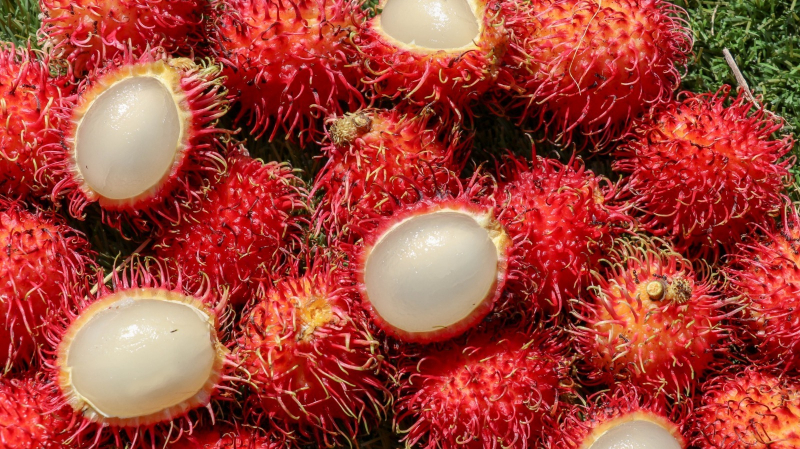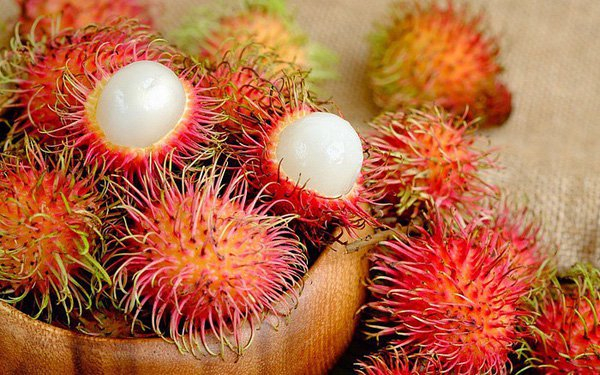Rambutan
Rambutan is a medium-sized tropical tree in the family of Sapindaceae. The name also refers to the edible fruit produced by this tree. Although rambutan is originally from Southeast Asia, you can find them throughout Latin America and the Caribbean. It is closely related to several other edible tropical fruits including lychee, longan, pulasan, and guinep. The fruit is an oval to round, single-seeded drupe that is 10–20 together in a loose pendant cluster, and it is 3-6 cm long (occasionally up to 8 cm long) and 3–4 cm wide. The name, which translates to "hairs", refers to the leathery skin, which is reddish (occasionally orange or yellow) and covered in fleshy, elastic spines. The fruit's spines commonly referred to as "spinterns", aid in transpiration, which may have an impact on the fruit's quality.
The rambutan fruit is primarily composed of water, 21% carbs, 1% protein, and very little fat. The canned fruit has 82 calories per 100 grams of reference weight and only moderate amounts of manganese (16% of the Daily Value) in terms of nutrition. The level of other micronutrients is low. The pleasant fragrance of rambutan fruit derives from numerous volatile organic compounds, including beta-damascenone, vanillin, phenylacetic acid, and cinnamic acid.












